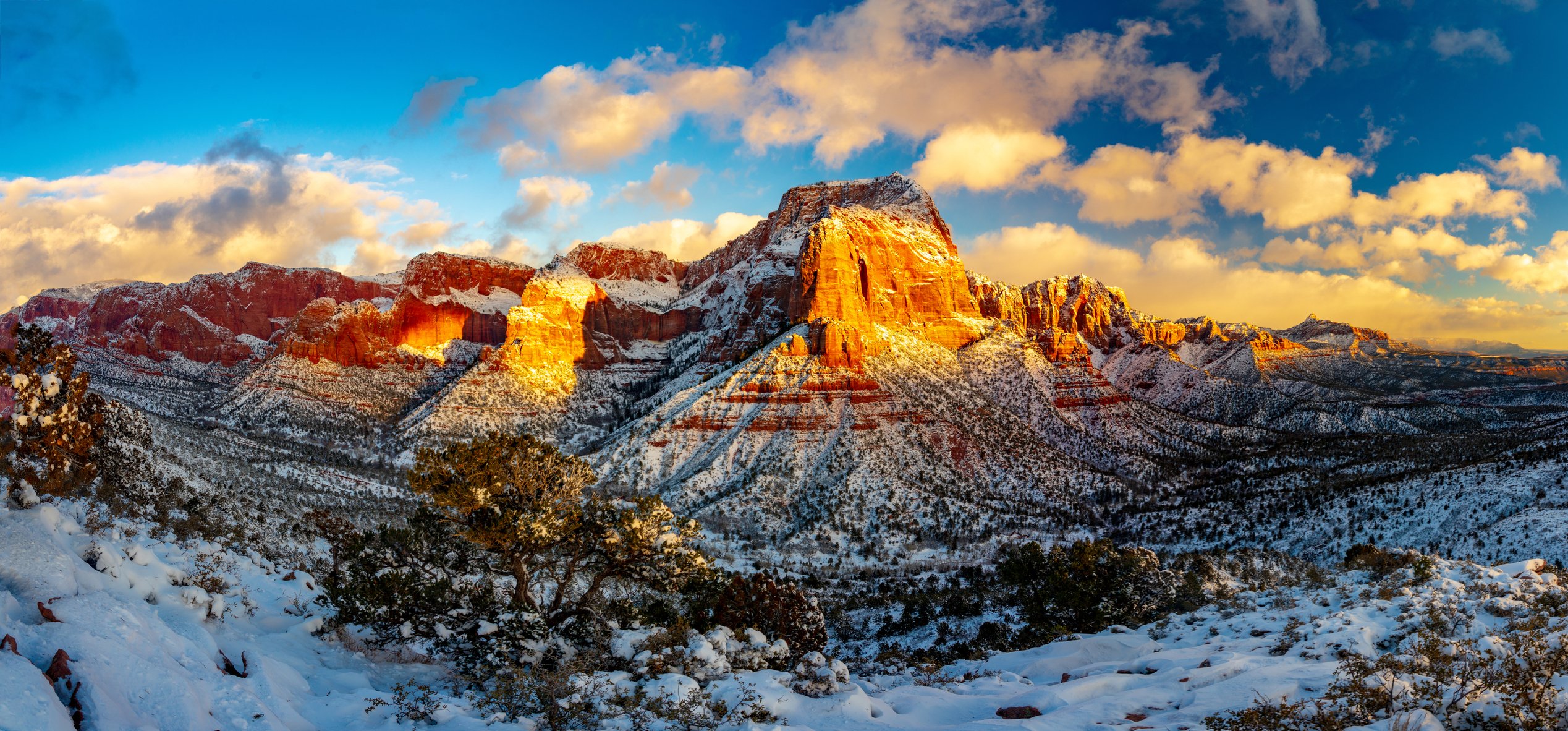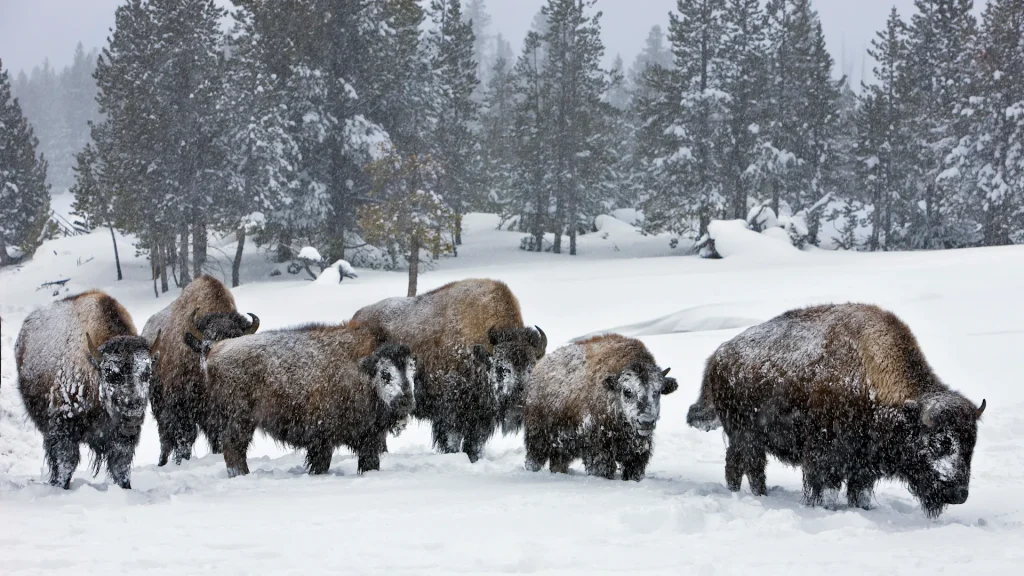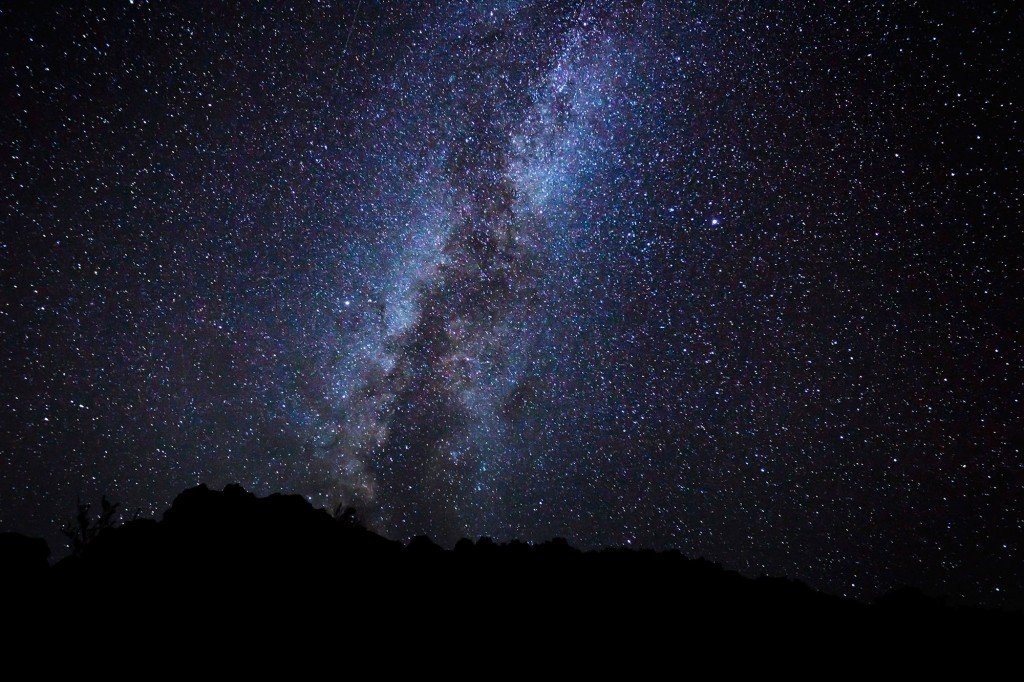Fewer crowds, dramatic scenery, great wildlife viewing and so much more
Winter in the national parks is a truly magical time. The snowy landscapes showcase nature’s serene beauty, transforming crowded trails into tranquil pathways. It’s known as the secret season for good reason.
Winter also provides an opportunity to explore the parks on cross-country skis or snowshoes and to witness wildlife in a new way. It offers a different perspective of the park experience, one that you may even have all to yourself if you’re fortunate. Here are the top reasons why you should consider exploring the national parks during winter.
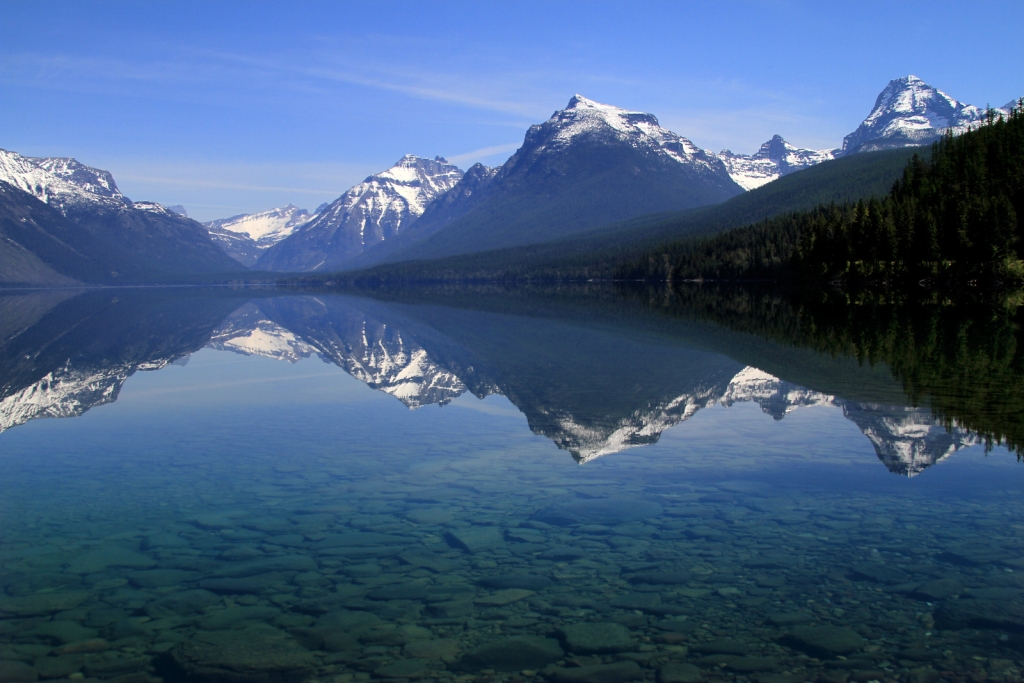
Spectacular Scenery
Winter brings a cool blanket of snow that covers the already beautiful landscape, creating a serene and pristine ambiance. This effect is particularly evident in Grand Canyon National Park. Throughout the year, fog can impact visibility, but during the winter months, the skies clear up substantially, enhancing the views. On clear winter days, you can even spot mountain peaks from viewing spots that are situated roughly 200 miles away. Similarly, in Zion National Park, the majestic red rock canyons sparkle when covered in snow, showcasing an even more dramatic appearance. Due to Zion Canyon’s low elevation, snow seldom reaches the canyon floor as temperatures remain relatively mild.
Landscapes in Yellowstone, Glacier, and Rocky Mountain National Parks become even more striking against winter’s icy backdrop, with the muted light casting an ethereal glow. Yellowstone’s geysers are particularly mesmerizing in the crisp air, and the park provides guided snowcoach tours for visitors during winter.
Conversely, Death Valley National Park rarely sees snow, except on its mountain peaks. Instead, the park offers pleasant winter weather with comfortable days and cool nights, providing an ideal escape for those seeking refuge from the cold elsewhere. Winter is the best time to visit the “hottest place on earth,” as the low-angled light enhances the beauty of the desert landscape. Whenever the park experiences winter rain, the chances of a spectacular wildflower season improve, which can begin as early as late February.
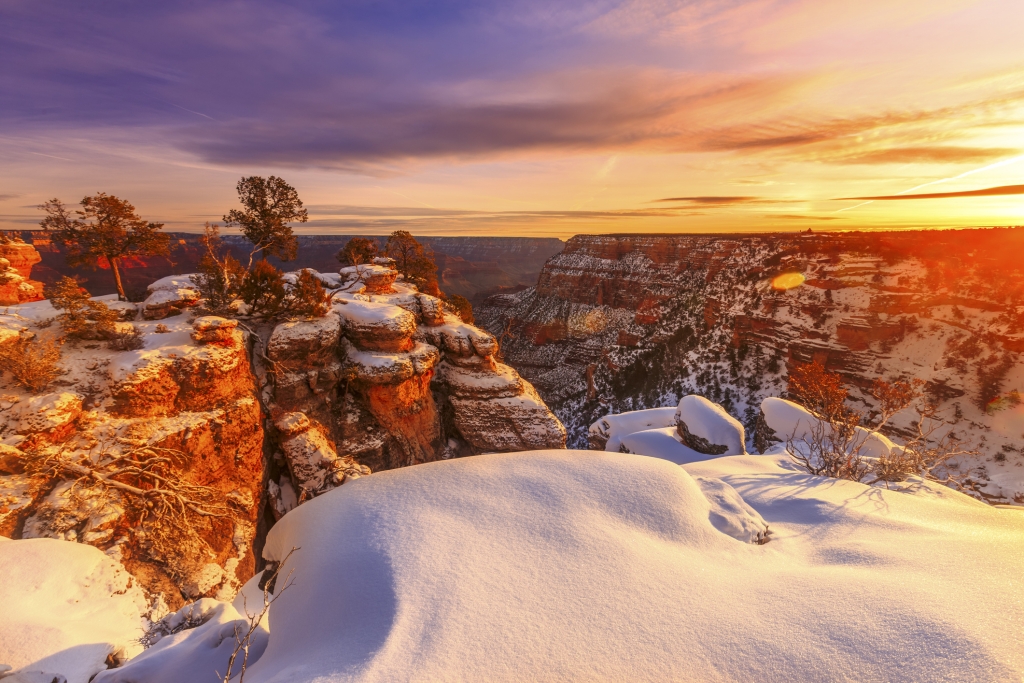
Fewer People
Chilly winter weather may deter many visitors in the parks – however, it guarantees a slower pace, more peace, and solitude compared to peak periods. True park enthusiasts appreciate this time as they can commune undisturbed with nature, away from the crowds. With only a handful of people on park trails, it can feel like you have them all to yourself. Best of all, securing lodging and restaurant reservations can be easier in the parks that offer winter facilities, such as Grand Canyon, Yellowstone, and Zion.
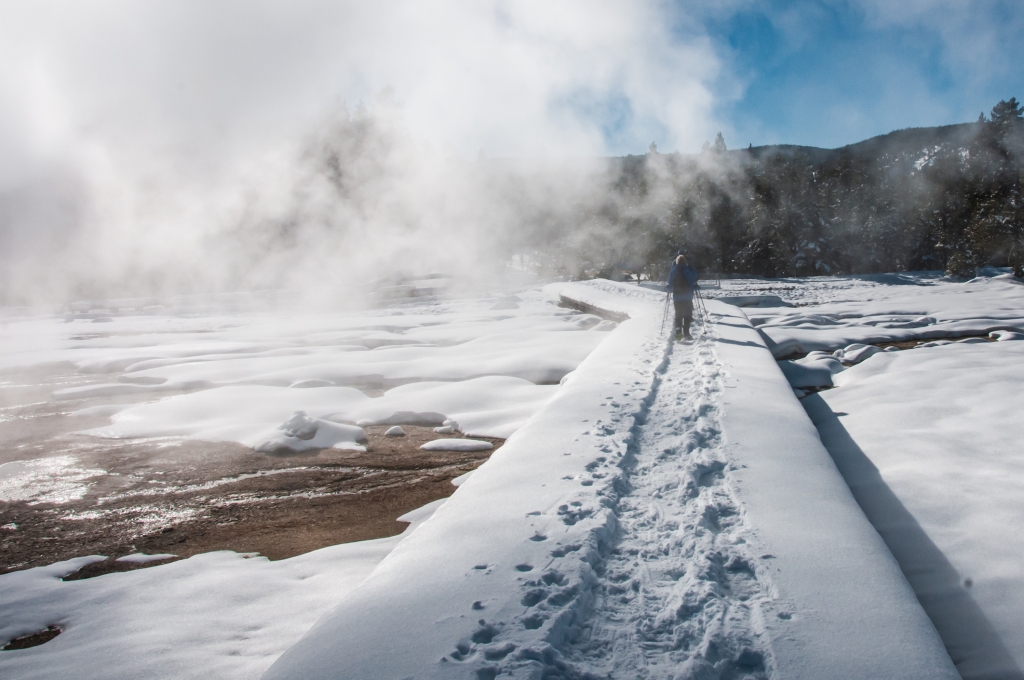
Winter Sports
Winter is the time to strap on your cross-country skis or snowshoes and head onto the parks’ snow-packed trails. Snowshoeing and cross-country skiing are wonderful ways to experience off-the-beaten-path spots. The simple, yet efficient, snowshoe enables you to stride comfortably over untouched paths without getting stuck in snow. Yellowstone National Park is a haven for cross-country enthusiasts, boasting more than 100 miles of ski trails for all ability levels. Roads are groomed for snowmobiles (and snowcoaches). You can even take a whirl around Yellowstone’s ice rinks.
Though much of Glacier National Park shuts down in the winter months, there are still plenty of trails for snowshoeing and cross-country skiing. Book your stay at Cedar Creek Lodge, located just outside the park, for mountain lodge comfort with modern style.
Rocky Mountain National Park offers exceptional snowshoeing, sledding, and hiking opportunities in its magnificent peaks. Moreover, backcountry skiers can navigate through the iconic continental divide.
In addition to cross-country skiing and snowshoeing, Zion National Park offers great hiking and biking in winter due to milder temperatures, much like Death Valley. In Death Valley, you can hike, bike, and horseback ride through the dramatic desert terrain. Not to mention, you can take a refreshing swim or play a round of golf at The Oasis at Death Valley resort, home to the lowest-elevation golf course in the world.
Wildlife Viewing
Bison and wolves and elk, oh my! Winter brings some of the best wildlife-viewing opportunities in the parks, when the heightened contrast against the snowy scenery makes the animals more visible — especially the larger mammals. Although bears take to their dens for a long winter’s nap, other creatures are up and about, foraging for food. Plus, their frozen footprints make them easier to track.
In Yellowstone, for example, watch for bison herds trekking through the snow, their breath steamy in the frigid air. They sometimes convene near the park’s thermal features for an impromptu steam bath. Elk, moose, and other ungulates can be spotted against the pristine white landscape. Yellowstone’s famous wolves are in their heyday in winter. With their woolly coats, long legs, and large fleshy paws, they do well in deep snow. Not up for trekking around yourself? You can always try wildlife watching from the comfort and warmth of a snowcoach.
Wildlife is abundant in Zion, and visible as you drive through Zion Canyon and explore the park’s trails. Mule deer appear frequently on the grounds around Zion Lodge. A wide variety of songbirds stay in the park during winter, along with hawks and eagles. Small mammals, such as rabbits, are also common.
In Grand Canyon, you may see mule deer, elk, rock squirrels, and other creatures foraging among the ponderosa pine forests and traipsing through fresh snow. California condors, ravens, and bald eagles can be spotted soaring above the canyon rims.
Despite its aridness — it’s considered the driest spot in North America — Death Valley boasts more than 400 animal species native to the park, including dozens of reptiles, 51 different mammals (such as desert bighorn sheep) and, amazingly, even six kinds of fish. You never know what you’ll see, so keep your eyes open for roadrunners zooming across the highway and coyotes feeding on fallen fruit in the date palm groves of The Oasis at Death Valley resort.
Stargazing
National parks are renowned for their exceptional stargazing opportunities, with Death Valley and the Grand Canyon standing out among the rest. Death Valley, the largest Dark Sky Park in the U.S. classified as Gold Tier by the International Dark-Sky Association, offers legendary stargazing experiences due to its dry, clear air. Visitors can witness spectacular views of constellations, planets, deep-sky objects, meteor showers, and even the increasingly elusive Milky Way. Similarly, the Grand Canyon, also classified as a Dark Sky Park, boasts exceptionally dark night skies, making it a heaven for stargazers. Yavapai Point overlook and Lipan Point on the South Rim are two popular locations offering pristine views of the Milky Way and constellations. Whether at Death Valley or the Grand Canyon, stargazing in these parks is an awe-inspiring experience reminiscent of prehistoric times. No matter which park you choose, after visiting in winter, you may never consider the more crowded summer months again.
Stay in one of the unique lodging options in the parks managed by Xanterra Travel Collection®. Staying in the parks is the best way for visitors to experience all they have to offer and to take advantage of the tours and activities provided by Certified Interpretive Guides. For more travel experiences available from the Xanterra Travel Collection® and its affiliated properties, visit xanterra.com/stories.


